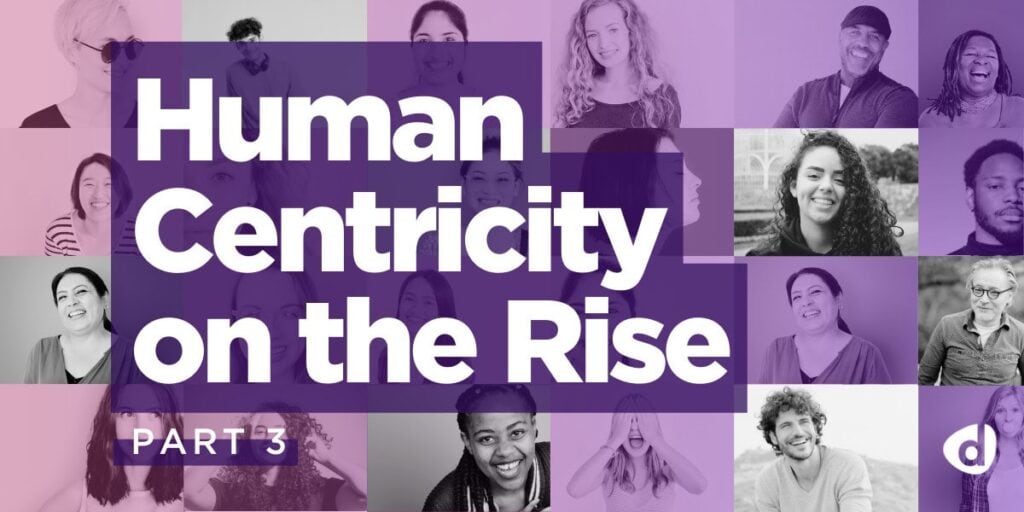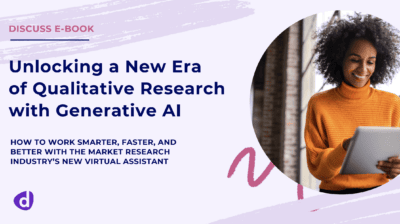The Organizational Benefits of Practicing Customer Empathy

In our personal relationships, the role of empathy is clear. The best relationships are founded on connection and understanding. In order to form these deep bonds, human beings must be able to share their feelings, understand their context, and comprehend the feelings of others. Empathy naturally motivates generous behavior and encourages loyalty in return.
Individuals develop empathy naturally, through conversation, curiosity, and a desire to connect. Now, companies are working to create this natural relationship-forming process with their customers. They are driven by a vision of true customer centricity, in which brands and all the stakeholders in an organization develop a deep understanding of their customers’ perspectives, aspirations, and motivations.
Why is customer empathy important in business?
Also known as “emotional intelligence,” empathy is simply “the ability to understand and manage your own emotions, as well as recognize and influence the emotions of those around you,” according to Harvard Business School.
It’s critical that brand stakeholders and customer-facing employees develop empathy for their customers. But brands cannot accomplish this without building genuine connections with customers—and customers can increasingly tell when a brand isn’t being genuine.
“Integrity is key to an empathic connection with someone else,” wrote the psychotherapist Barton Goldsmith in Psychology Today. “If an outside or selfish agenda is in the mix, no one will grow or heal.” Even so, customer empathy isn’t completely altruistic. Although it has positive outcomes for customers, it’s also a major factor in driving brand growth.
Customer empathy is not new, but it is growing.
While empathy is somewhat new as a business focal point, it is not a new concept. Empathy in customer service has been a long-employed mission statement by many B2C companies.
Roughly 20 years ago, brands began adopting “voice of the customer” methodologies in product and services development. The intent was to ensure that the products that brands developed were ones that consumers actually wanted to use, and ultimately to instill brand loyalty by ensuring that consumers felt good about the brand.
In the early days of “voice of the customer,” the unstructured qualitative data of customer engagement was messy and difficult to share across the enterprise. “Superficially, it has never been easier to generate quantitative and qualitative reactions to emerging ideas,” Forbes reported in 2014. “[But] those involved in innovation projects complain that the feedback loop is not all that it’s cracked up to be.”
Whether it was analyzing call center logs or conducting focus groups, the left hand didn’t know what the right hand was doing; today, this prevents stakeholders from sharing key customer insights across the organization. Companies could not and cannot make broad, strategic decisions based on an appreciation of how customers really feel.
Building Customer Empathy Across the Organization
“Empathy is what it’s all about . . . We have to meet the unmet, unarticulated needs of the customers. That’s the source of innovation. So, if there’s anything that we’ve got to make sure each day, each week, each year that we do is to be in touch.”
—Satya Nadella, CEO of Microsoft
How can brands create the products and messaging that speak to their customers’ needs? If brands have a platform to conduct rich and open conversations with customers, and then share those insights across the organization, they can foster a culture of empathy. They can innovate and create new products, and then set up marketing campaigns to promote them successfully.
Empathetic conversations need to be conducted firsthand by all stakeholders, actively and personally engaging with consumers about key aspects of their lives—in many cases, beyond their experiences with the company’s products. But in the siloed environment of most companies, some stakeholders still have little to no access to these fundamental experiences.
To achieve optimal customer centricity, brands need to empower all stakeholders with the tools to make empathy actionable and global, at scale and in real time. Newer, live-video-based platforms are providing exciting ways for brands to realize this vision.
Connecting with customers using Discuss.io
“Leaders who are empathetic when they listen and respond tend to perform more than 40% higher in key leadership areas, such as coaching, planning, and decision making.”
—Jamelle Lindo, Emotional Intelligence (EQ) Coach at PARADIGM People Development
At Discuss.io, we enable brands to make faster, more effective business decisions by engaging in conversations with consumers globally and in real-time, via video web conferencing. We help companies facilitate conversations that are iterative, flexible, scalable, and not limited by geography.
Using live video, we enable stakeholders across all business disciplines to connect with consumers face-to-face online, in order to achieve a rapid and deep-seated understanding of their perspectives and behaviors. This “agile empathy” enables brands to make better real-time decisions, leading to reduced time to market, more effective marketing and successful products.
Let’s Get Started
Discuss.io is the single best way to optimize customer centricity to tackle the business challenges faced within your organization. Let’s start a conversation to learn how your organization can start meaningful conversations with customers and drive institutional insights for your stakeholders.
Sign Up for our Newsletter
Related Articles

5 Trends Shaping the Future of Qualitative Insights: Key Findings from the 2024 GRIT Business & Innovation Report
By Jim Longo, Co-Founder & Chief Strategy Officer at Discuss Each year, the Greenbook Research Industry Trends (GRIT) Business &…
By Jim Longo, Co-Founder & Chief Strategy Officer at Discuss Each year, the Greenbook Research Industry Trends (GRIT) Business &…

Human Centricity on the Rise: Navigating the New Era, Part 3
How to unlock human centricity at scale with a key mindset shift In Part 1 of this blog series, I…
How to unlock human centricity at scale with a key mindset shift In Part 1 of this blog series, I…

From Apathy to Empathy: The 3 Steps to Design for Human Centricity at Scale
By Adam Mertz, Chief Growth Officer at Discuss Introduction I recently had the opportunity to moderate a compelling discussion between…
By Adam Mertz, Chief Growth Officer at Discuss Introduction I recently had the opportunity to moderate a compelling discussion between…


